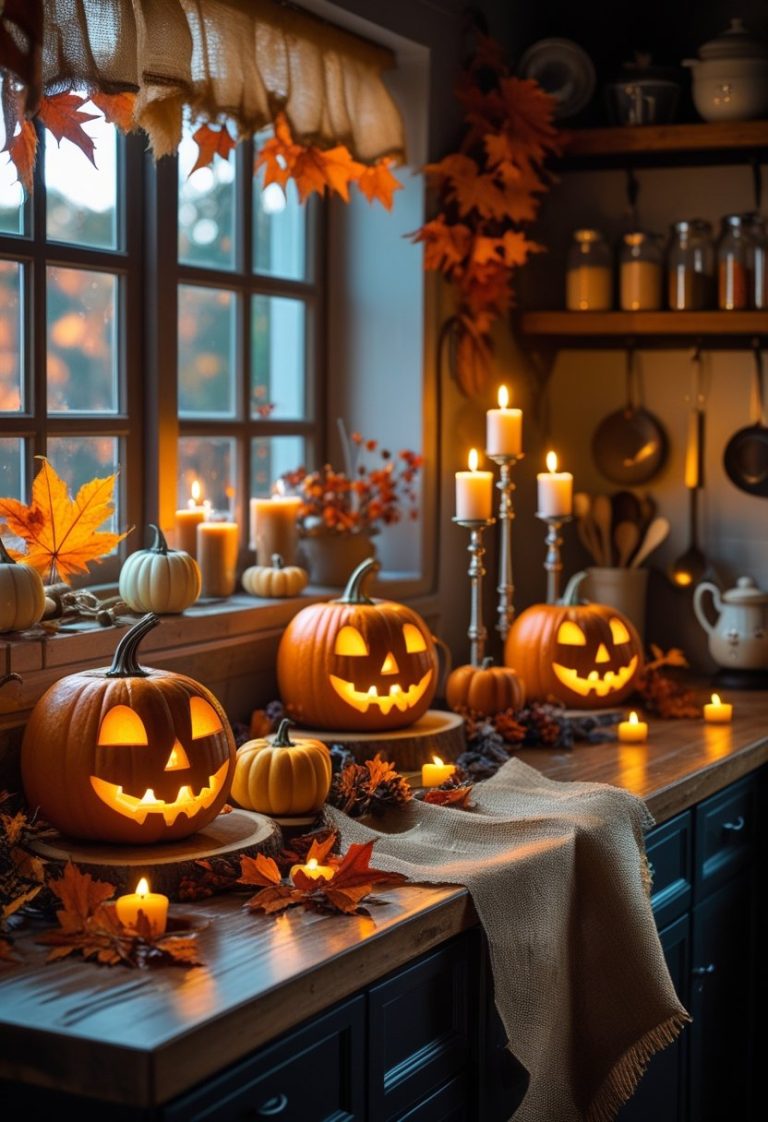Modern Home Interior Design Ideas for Stylish Living
Discover how modern interior design can blend elegance with cozy functionality to create welcoming and stylish living spaces. This collection of 23 home interior design ideas highlights minimalist living rooms, neutral palettes, and the use of natural textures that bring warmth and sophistication into any home.

These ideas focus on combining Scandinavian simplicity, contemporary furniture layouts, and bold accent colors to elevate home decor while maintaining comfort and practicality. The designs offer a balance of clean lines and inviting elements that transform spaces into chic retreats.
By exploring these trending design inspirations, readers can find effective ways to update their interiors with statement pieces and thoughtful arrangements that enhance both style and livability.
Key Principles of Modern and Cozy Interior Design
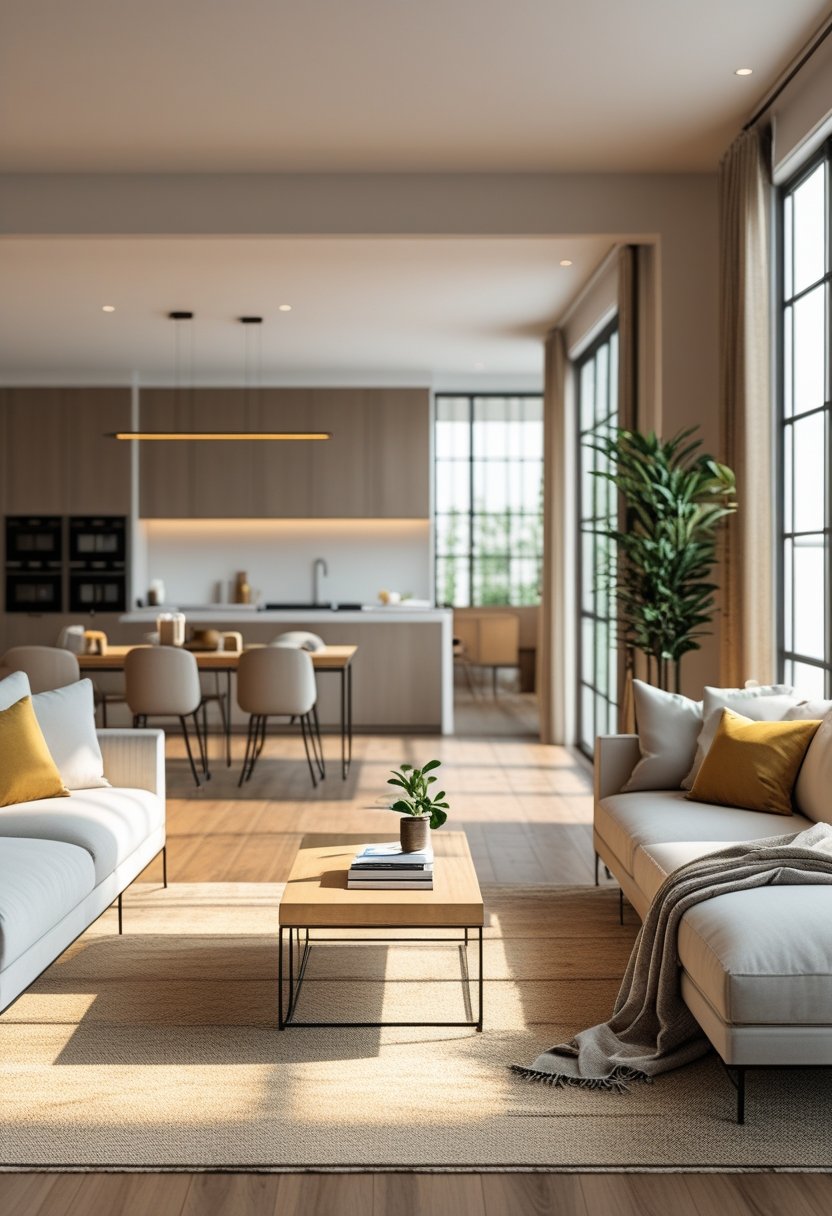
Successful modern and cozy interior design combines clean aesthetics with inviting, livable spaces. This balance involves understanding design styles, prioritizing usability, and integrating warmth without clutter.
Modern Versus Contemporary Design
Modern design focuses on simplicity, function, and minimalism, often emphasizing clean lines, neutral color palettes, and natural materials like wood, stone, and metal. It reflects a timeless elegance rooted in mid-20th-century principles.
Contemporary design, by contrast, evolves with current trends and allows for more experimentation in forms, colors, and textures. It often incorporates bold accent colors, innovative materials, and a mix of old and new elements.
While modern interior design favors a minimalist aesthetic with mindfulness toward clutter reduction, contemporary spaces tend to blend various styles dynamically. Both prioritize a sophisticated feel but differ in flexibility and expression.
The Role of Functionality and Comfort
Functionality is central; spaces must support everyday living efficiently. Furniture layouts in modern and cozy interiors emphasize ease of movement and dual-purpose use, such as ottomans with storage or nesting tables.
Comfort is achieved through soft textiles, ergonomic furniture, and lighting that enhances mood without overpowering. Cozy design encourages layering textiles like rugs, throws, and cushions to add tactile warmth, balancing the restraint of modern minimalism.
This principle aligns with mindful living, where intentional choices enhance well-being. The combination creates spaces that invite relaxation while remaining practical.
Balancing Simplicity and Warmth
Simplicity in design comes from clean lines, a restrained color palette, and uncluttered spaces, hallmarks of minimalist and modern interior design. Warmth is introduced through natural textures—wood grains, woven fabrics, and matte finishes—that soften starkness.
Layering is a key technique: pairing neutral walls with textured furnishings or adding plants introduces organic vitality. Statement pieces, such as a sculptural chair or a bold rug, provide focal points without overwhelming simplicity.
The balance ensures homes feel both stylish and welcoming, embodying a calm yet energized atmosphere ideal for varied living needs.
Minimalist Living Room Inspirations
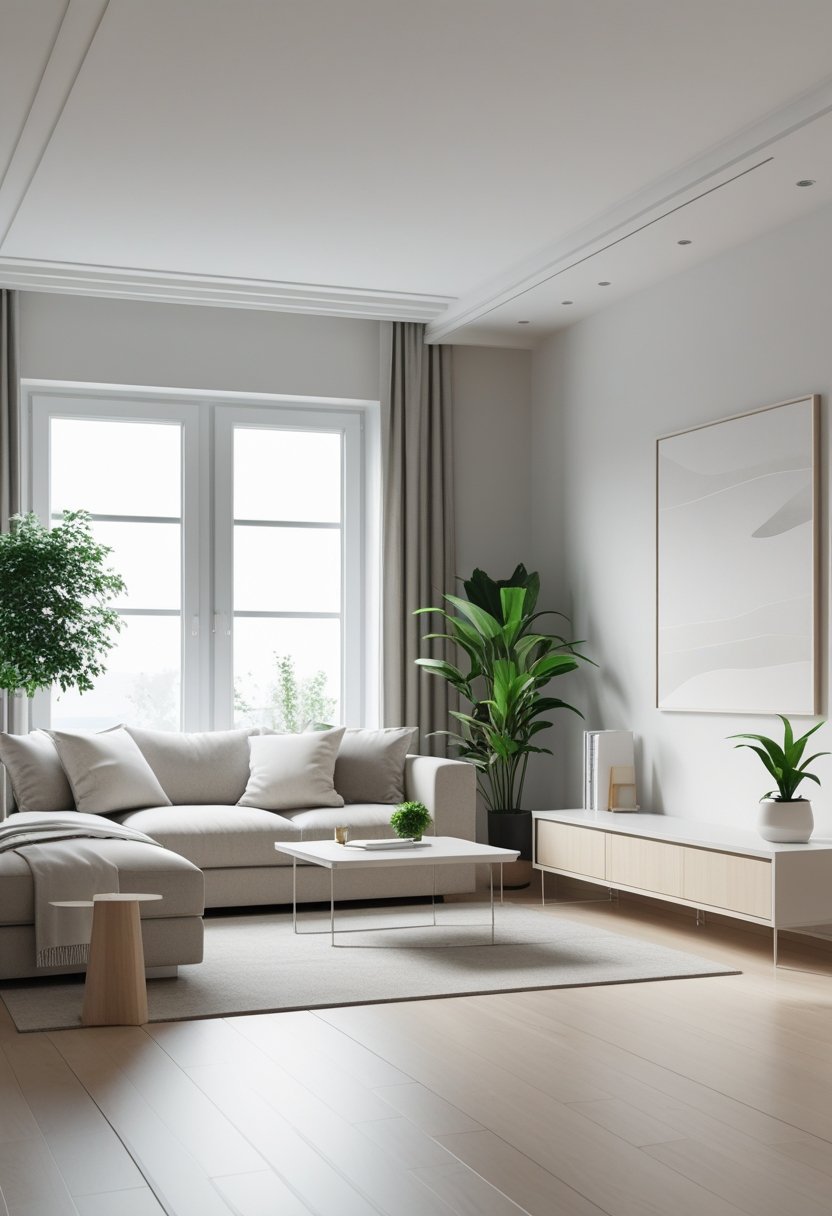
A minimalist living room combines simplicity with practical design. It focuses on using neutral tones, clean lines, and functional pieces that create an uncluttered and calming space. Thoughtful use of light, furniture, and storage enhances both style and comfort.
Neutral Color Palettes for Calm Environments
Neutral tones form the foundation of minimalist living rooms. Shades like soft whites, muted grays, warm beiges, and gentle taupes promote a serene atmosphere that helps reduce visual noise. These colors also open up the space, making rooms feel larger and more inviting.
Layering these neutrals with subtle contrasts—such as a darker gray sofa against pale walls or natural wood accents—adds depth without disrupting the simplicity. Neutral palettes provide a flexible backdrop suitable for different furniture styles and easy to adapt with seasonal or personal decor changes.
Clutter-Free Spaces and Streamlined Furniture
Clutter-free environments are essential for a minimalist design to function well. Living rooms with minimal possessions visibly displayed maintain a sense of order and tranquility. This requires careful selection of belongings, keeping only what is useful or meaningful.
Streamlined furniture with clean, straight lines supports this aesthetic. Pieces often have simple shapes and lack ornate details, emphasizing function over decoration. Minimalist furniture tends to be lightweight and visually unobtrusive, allowing for easy movement and rearrangement within the space.
Maximizing Natural Light
Natural light plays a vital role in enhancing minimalist spaces by emphasizing openness and warmth. Sheer curtains are preferred to maintain privacy while allowing sunlight to filter in softly. This keeps rooms bright without harsh glares or heavy shadows.
Positioning furniture near windows optimizes light distribution throughout the living room. Reflective surfaces, such as glass tabletops or light-colored floors, also help bounce light deeper into the space. Maximizing daylight reduces the need for excessive artificial lighting and supports a clean, airy atmosphere.
Incorporating Storage Ottomans and Functional Decor
Functional decor is key to maintaining minimalism while adding comfort and utility. Storage ottomans serve dual purposes: providing extra seating or a footrest while concealing items like blankets, magazines, or remote controls.
These pieces often feature simple designs and neutral fabrics that blend with the rest of the room. Incorporating such multifunctional items helps reduce visible clutter without sacrificing style, reinforcing the clean-lined look essential to minimalist living rooms.
Trending Color Palettes and Accents
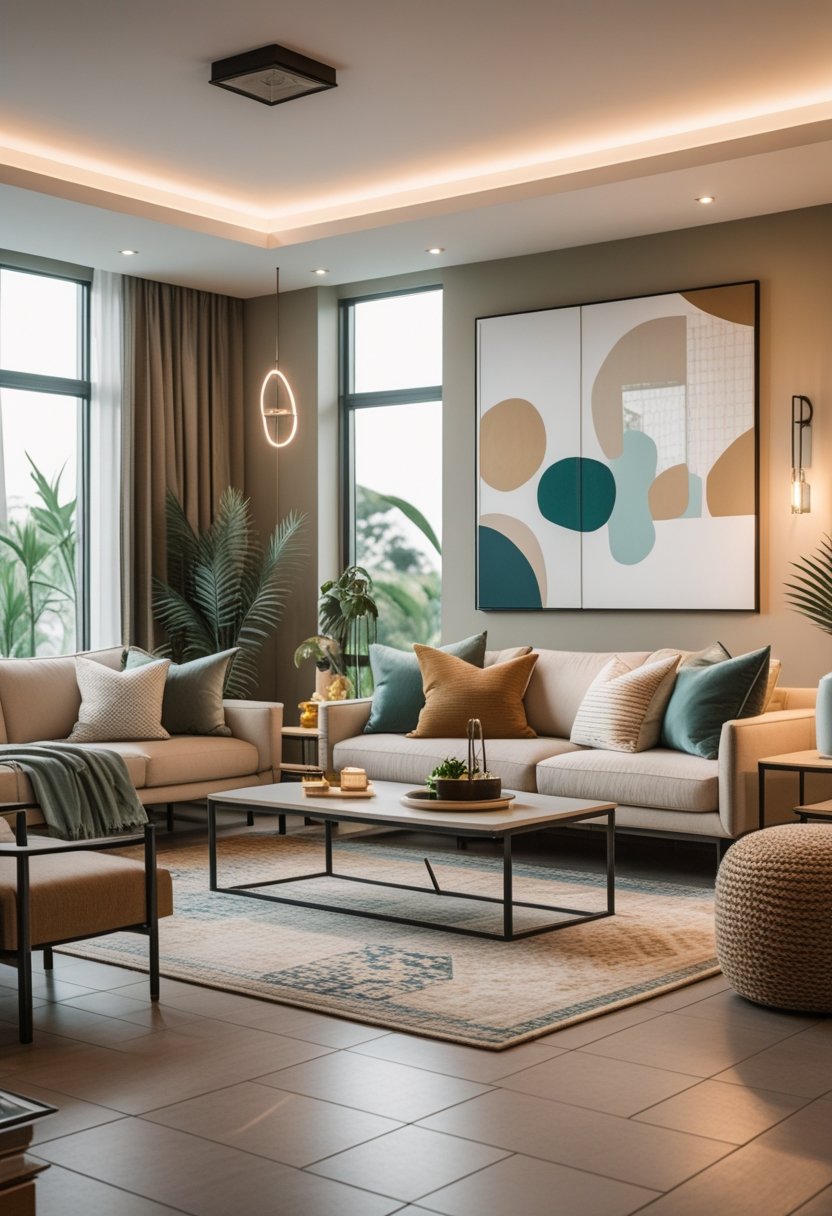
Modern interior design balances soothing base colors with strategic pops of bold tone and tactile surfaces. A thoughtful combination of muted shades, vibrant accents, and natural textures creates spaces that feel inviting yet polished.
Earthy Hues and Soft Neutrals
Earthy hues like warm beiges, soft taupes, and gentle greens form the backbone of many contemporary interiors. These colors provide a neutral color palette that promotes calm and enhances natural light.
They work well as wall colors, upholstery, or large furniture pieces. This approach supports a cozy, grounded atmosphere without overwhelming the senses. Popular earth tones include clay, sand, and olive, which coordinate effortlessly with wood finishes and woven fabrics.
Bold Accent Colors and Feature Walls
In contrast, bold accent colors inject energy and personality into rooms. Deep blues, vibrant ochres, or rich emeralds are common choices that serve as statement points.
Accent walls painted in these strong hues draw focus and break the monotony of neutral backgrounds. Using colorful decor elements like cushions, rugs, or art can achieve the same effect in smaller doses. Careful placement ensures color accents enhance rather than clash with the overall palette.
Using Natural Materials for Texture
Natural materials like wood, stone, and linen add physical texture that complements any color scheme. Their inherent variations create visual interest and rich tactility, enhancing comfort and sophistication.
Incorporating natural fibers in textiles or exposed wood beams maintains a connection to nature, which is increasingly valued in modern design. These materials also help balance bold colors by softening the visual impact and grounding the space.
Modern Furniture and Contemporary Layouts
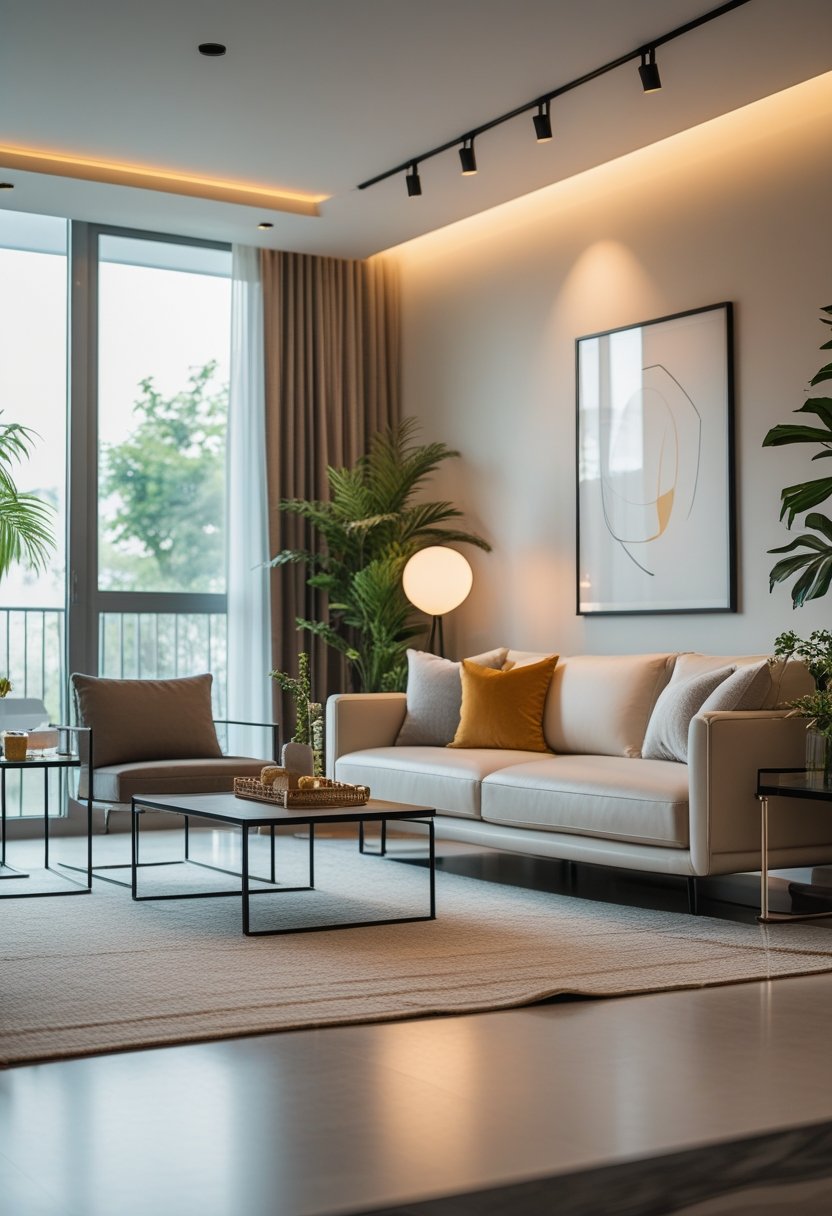
Modern furniture in contemporary interiors emphasizes functionality, clean lines, and a careful balance between aesthetics and comfort. Layouts prioritize open spaces that encourage natural movement and connection between rooms. Attention to detail in design and arrangement enhances both the visual appeal and livability of the home.
Sleek Lines and Statement Pieces
Contemporary furniture features streamlined silhouettes with minimal ornamentation. Pieces like low-profile sofas, platform beds, and geometric chairs create visual interest without overwhelming a room.
Statement furniture often acts as a focal point. A bold-colored armchair or an angular coffee table can add personality while maintaining the overall simplicity of the design.
Materials such as metal, glass, and light wood are common, reinforcing the clean, uncluttered look. These choices support both functionality and modern elegance, blending seamlessly with neutral palettes or bold accent colors.
Open Floor Plans for Easy Flow
Open floor plans eliminate unnecessary walls, connecting living, dining, and kitchen areas into one cohesive space. This design encourages natural light, improves sightlines, and fosters social interaction.
Careful zoning with rugs, furniture placement, or ceiling treatments helps define each space without interrupting the overall flow. The arrangement supports modern living by making spaces feel larger and more flexible.
An open layout also allows furniture to be easily repositioned, adapting to changing needs or events. It aligns well with contemporary interior design’s emphasis on seamless form and function.
Latest Trends in Furniture Design
Current trends in modern furniture include multifunctional pieces like storage beds and modular seating. These designs maximize space efficiency, catering to both aesthetics and practicality.
Natural textures such as exposed wood grain and woven fabrics introduce warmth into sleek interiors. Matte finishes and muted colors remain popular, balanced by occasional metallic accents for contrast.
Sustainability and smart technology integration also influence design choices. Furniture that incorporates eco-friendly materials or smart features aligns with the evolving expectations of modern homeowners.
Global Influences: Scandinavian, Japandi, and Boho Styles
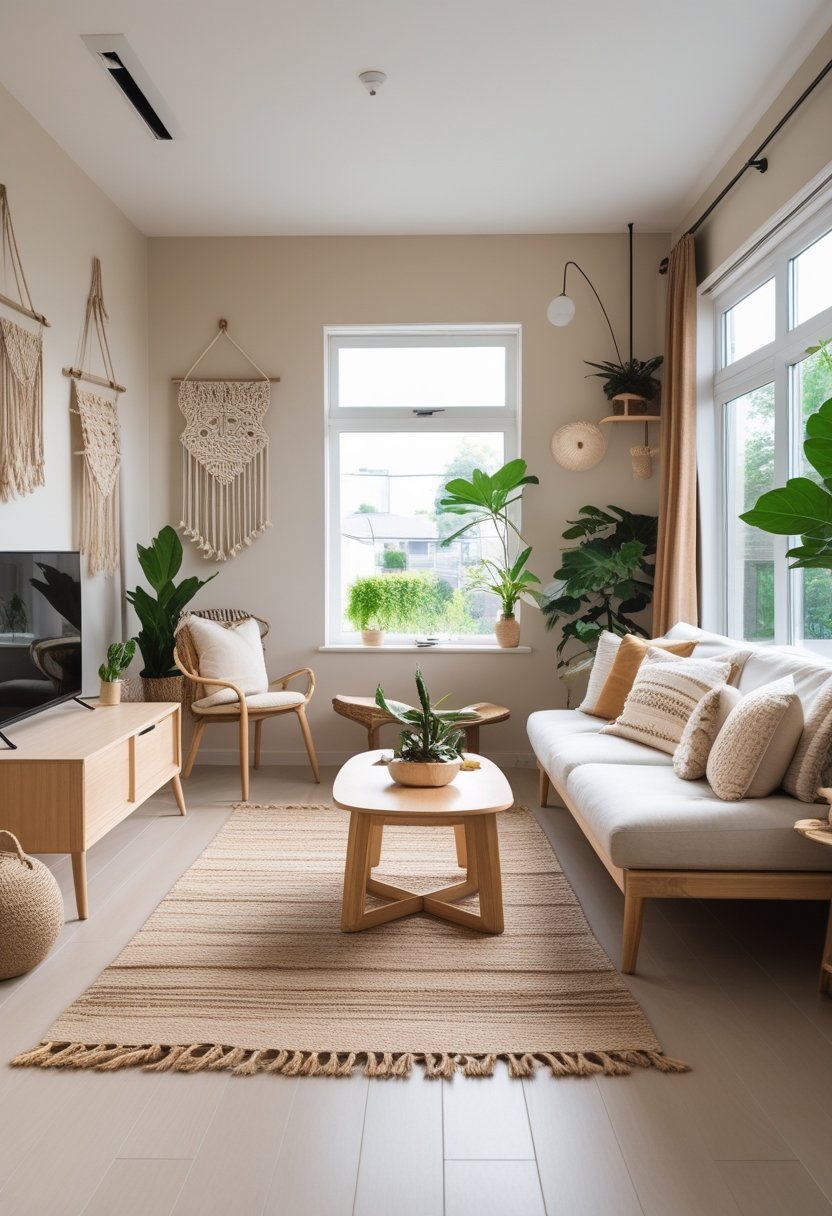
Modern home interiors often blend aesthetics that balance function and comfort. These influences introduce clean lines, natural materials, and layered textures to create spaces that are both elegant and inviting.
Scandinavian Simplicity and Warmth
Scandinavian design focuses on minimalism paired with cozy elements. It uses a neutral color palette dominated by whites, grays, and muted earth tones to maintain brightness and openness. Natural light is emphasized, complemented by materials such as light wood and soft textiles.
Functionality is key. Furniture features simple forms and efficient designs without excess ornamentation. Accessories are sparing but purposeful, often including cozy throws or rugs to add warmth. This style promotes a sense of calm and order, ideal for uncluttered living spaces.
Japandi’s Hybrid Minimalism
Japandi blends Scandinavian simplicity with Japanese minimalism, creating a clean yet warm aesthetic. The style highlights natural materials like wood, bamboo, and linen, combined with low-profile furniture and muted tones. It emphasizes craftsmanship and subtle beauty.
The fusion fosters balance between practicality and serenity. Functional pieces with sleek lines meet modest decor accents such as pottery or plants. Japandi spaces avoid excess while still feeling inviting, offering a modern interpretation of minimalist comfort.
Cozy Boho Retreat Elements
Boho style introduces eclectic layers and global influences that contrast with Scandinavian and Japandi minimalism. It uses rich textures, vibrant patterns, and varied textiles drawn from diverse cultures. The look is casual, embracing imperfections and a lived-in feel.
Key features involve handcrafted items, mixed fabrics, and warm colors like ochre or rust. Plants and natural fibers enhance this earthy atmosphere. Boho spaces prioritize comfort and personality, encouraging a relaxed, creative environment that complements more structured styles.
Integrating Natural Elements for a Calming Ambiance

Natural elements bring a serene and grounded feel to interior spaces through thoughtful use of plants, materials, and architectural features. This approach enhances comfort while promoting a healthier living environment.
Incorporating Indoor Plants and Organic Materials
Indoor plants are essential for adding life and improving air quality. They work best when placed strategically near seating areas or windows. Popular choices include fiddle leaf figs, snake plants, and pothos, which require minimal maintenance.
Organic materials such as bamboo, rattan, and wool add texture and warmth. Bamboo furniture is durable and eco-friendly, providing a sustainable alternative to traditional wood. Additionally, natural fabrics for cushions and rugs, like linen or cotton, complement plant life and soften the space.
Maximizing Natural Light and High Ceilings
Natural light amplifies the sense of openness and wellbeing. Large windows or skylights allow maximum daylight into rooms, reducing the need for artificial lighting. Sheer curtains can diffuse light softly without blocking it.
High ceilings further contribute to an airy, spacious feel. They enhance light penetration and improve ventilation. Incorporating reflective surfaces such as light-colored walls or mirrors can boost natural light even more, making spaces feel larger and more inviting.
Eco-Friendly and Sustainable Choices
Sustainability is crucial in modern interior design. Using eco-friendly materials like reclaimed wood, recycled metal, and bamboo reduces environmental impact. These materials often come with a warm, organic aesthetic that fits well with natural design themes.
Choosing furniture and décor from brands that prioritize sustainable production adds long-term value. Additionally, opting for non-toxic paints and natural fiber textiles contributes to a healthier home atmosphere. Prioritizing durability and recyclability supports environmental responsibility while maintaining style.
Smart Home Technology for Functional Elegance

Integrating smart technology enhances home interiors by combining convenience with refined design. Key elements include adaptable lighting, precise climate control, and technology that blends seamlessly with décor to maintain aesthetic balance.
Smart Lighting Solutions
Smart lighting offers dynamic control over ambiance and energy use. Adjustable color temperature and brightness cater to different activities, from work to relaxation, providing both comfort and style.
Homeowners can schedule lights or use voice commands for easy operation. Integration with sensors enables lights to respond automatically to occupancy or natural light levels, improving efficiency.
Options range from smart bulbs and strips to entire systems compatible with popular platforms like Alexa or Google Home. These solutions reduce energy costs while enhancing the visual appeal of rooms through customizable lighting scenes.
Implementing Smart Thermostats
Smart thermostats regulate home temperature based on occupancy patterns and preferences. They learn habits over time, optimizing heating and cooling schedules for comfort and energy savings.
Remote control via smartphone apps allows adjustments on the go. Some models provide detailed energy usage reports, encouraging efficient consumption.
Integration with other smart devices creates coordinated environments. For example, thermostats can lower the temperature when windows are open or when no one is home, maintaining comfort without waste.
Integrating Technology Seamlessly
Smart technology must complement interior design without disrupting style. Devices with minimalist designs or concealed installations preserve a clean aesthetic.
Built-in controls and wireless solutions reduce clutter. For instance, smart switches replace traditional ones without extra fixtures, and voice-activated assistants eliminate the need for physical controls.
Using uniform finishes and coordinating colors ensures technology blends with furniture and decor. This balance of form and function creates a space that feels modern, yet warm and inviting.
Elevating Kitchens and Dining Spaces

Kitchens and dining areas are central to both daily living and entertaining. Designs that combine efficient storage, open layouts, and practical aesthetics enhance usability and elevate the room’s visual appeal.
Modern Kitchens with Streamlined Storage
Modern kitchens prioritize clean lines and minimal clutter. Cabinets with flat fronts and hidden handles create a sleek look. Incorporating pull-out drawers, built-in organizers, and corner carousel units maximizes storage without sacrificing style.
Materials like matte finishes and soft-close mechanisms improve both durability and comfort. Integrated appliances maintain a seamless appearance. Countertops remain largely clear, emphasizing workspace and reducing visual noise.
Effective lighting, such as under-cabinet LEDs, highlights surfaces and adds dimension. These elements work together to improve functionality while preserving a polished, contemporary kitchen atmosphere.
Open Concept Dining for Social Living
Open floor plans integrate dining areas with kitchens and living rooms to support social interaction and flexibility. Removing barriers allows natural light to flow and makes spaces feel larger.
In these layouts, furniture placement is key. Tables with clean designs and comfortable seating create inviting zones without crowding. Rugs or lighting fixtures can visually define the dining area within the broader open space.
This approach encourages ease of movement and fosters connections during gatherings. It also allows the culinary and dining functions to complement each other, blending utility with hospitality.
Blending Functionality with Design
Balancing practicality and aesthetics in kitchens and dining rooms is essential. Choices like durable, easy-to-clean surfaces meet everyday demands but also contribute to visual impact.
Natural materials such as wood and stone introduce warmth and texture. Accent features—like pendant lights, bold backsplashes, or statement chairs—add personality without overwhelming the space.
Designers often prioritize flexible solutions, such as extendable tables or multi-use islands, to adapt to various needs. This blend ensures the space remains both beautiful and suitable for daily routines.

Ana Luisa
Explore in-depth biographies, net worth insights, and exclusive updates on your favorite singers at Trionua.com. Discover the journeys, achievements, and latest news about music’s biggest stars.



